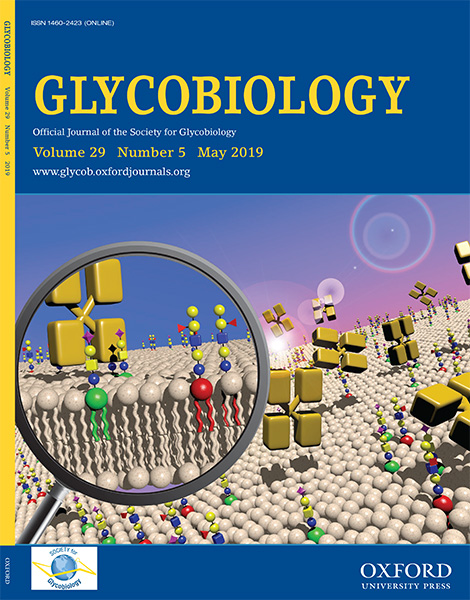Story Overview
A team of researchers from the Artie McFerrin Department of Chemical Engineering at Texas A&M University have developed new a new glycoarray tool and a new computational tool, leading to a breakthrough in the characterization of lectin-glycan interactions.

Dr. Hung-Jen Wu and Dr. Joseph Sang-II Kwon, assistant professors in the Artie McFerrin Department of Chemical Engineering at Texas A&M University, have developed a new theory to predict a pathogen infection pathway. This new development, which was featured on the cover of the May issue of the journal Glycobiology, is based on the complex interactions between glycans and lectins, two biomolecules found in living systems. Lectin-glycan interactions play an important role in a wide variety of physiological and pathological processes, but these interactions have several unique characteristics that make them difficult to characterize or analyze using traditional biomolecular analysis tools. The research team has developed a new glycoarray tool, along with a computational tool, that allow for a deeper understanding and characterization of glycan-lectin interactions and bonds.
Glycans are among the most diverse biomolecules, forming dense and complex patches on the surface of cells. Lectin-glycan interactions are involved in a wide variety of organic processes, including cell differentiation, cell-cell communication, viral infection and bacterial adhesion. However, lectin-glycan interactions are fundamentally different than other bimolecular interactions. Lectin-glycan interactions are not highly specific and lectins often bind to different glycan structures with different affinities. Further, most lectins bind to glycans via multivalent binding, in which a single lectin could bind to multiple glycan molecules. Finally, because of the fluidic nature of the cell membranes, glycans attached to lipids or membrane proteins can diffuse and rotate on the 2D cell surface, and therefore, the glycans can form multivalent interactions with lectins. All of this is to say that the lectin-glycan recognition principle is fundamentally different from other established biomolecular binding models. The existing methods of lectin analysis miss all of these unique characteristics, and often fail to explain unexpected phenomena.
In order to better understand the nature of lectin-glycan interactions, Wu has developed a high-throughput nanocube sensor array that quantitatively measures lectin-glycan interactions in a cell membrane mimicking environment. In addition to the sensor array, Kwon has also developed a computational tool, a kinetic Monte Carlo simulation, which models the process of lectins binding to glycans on cell surfaces.
Using these new tools, Wu and Kwon have been able to further characterize lectin-glycan interactions. The results of the research suggest that hetero-multivalency has a complex impact on lectin binding behaviors, and likely serves as a key mechanism in lectin-glycan recognition. Wu and Kwon go on to hypothesize that cells utilize this mechanism to regulate the downstream lectin functions. The research suggests that two factors – surface diffusion of glycan ligand and lectin binding kinetics – play a major role in glycobiology processes.
This research has been recently funded by the Chemistry of Life Processes Program at the National Science Foundation